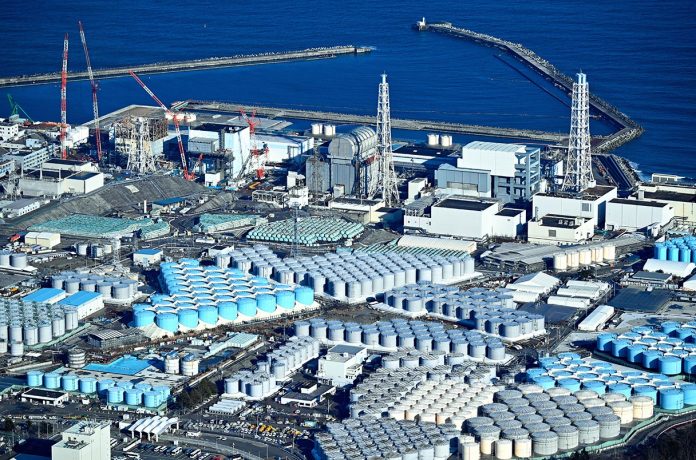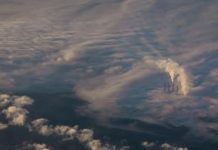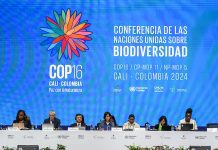By Robert Richmond
Japan plans to dump treated, radioactively contaminated water from the Fukushima nuclear plant into the Pacific but it could be used in other ways instead.
When the earthquake and resulting tsunami hit Fukushima, Japan in 2011, it killed thousands and caused severe damage to a nuclear power plant, which required a constant flow of cooling water to prevent further catastrophe.
Over the past 12 years, more than 1.3 million tonnes of radionuclide-contaminated water have now been retained on-site.
The Fukushima plant operator, Tokyo Electric Power Company (TEPCO), with the approval of the Japanese Government and backing from the International Atomic Energy Agency, plans to begin releasing this water into the Pacific Ocean this year.
But compelling data-backed reasons to examine alternative approaches to ocean dumping over the next 40-plus years have not been adequately explored.
The apparent rush to treat, dilute and dump should be postponed until further due diligence can be performed, and alternative approaches seriously considered.
During a visit to the Fukushima site in February 2023, it was apparent that large amounts of concrete will need to be used to expand the seawall, stabilise large amounts of contaminated soil and fortify the ice barrier presently in place to reduce groundwater flow into the damaged reactors.
Using the treated cooling water onsite to mix concrete that can be used to expand the seawall should be given more consideration if the water is truly safe, as it removes the issue of ocean release and would substantially reduce the volume of stored cooling water.
The present situation arose from a classic type II statistical error: accepting a false hypothesis (of safety of the nuclear power plant siting, with inadequate safety measures).
A more detailed set of analyses that includes problematic scenarios can help prevent another calamity.
Claims of total safety are not supported by the available information.
The world’s oceans are shared among all, providing over 50 percent of the oxygen we breathe, and a diversity of resources of economic, ecological and cultural value for present and future generations.
Within the Pacific Islands in particular, the ocean is viewed as connecting, rather than separating, widely distributed populations.
The risks of wastewater to the Pacific Releasing radioactive contaminated water into the Pacific is an irreversible action with transboundary and transgenerational implications.
As such, it should not be unilaterally undertaken by any country.
The Pacific Islands Forum has had the foresight to ask the relevant questions on how this activity could affect the lives and livelihoods of their peoples now and into the future.
It has drawn on a panel of five independent experts to provide it with the critical information it needs to perform its due diligence.
No one is questioning the integrity of Japanese or International Atomic Energy Agency scientists, but the belief that our oceans’ capacity to receive limitless quantities of pollutants without detrimental effects is demonstrably false.
For example, tuna and other large ocean fish contain enough mercury from land-based sources to require people, especially pregnant women and young children, to limit their consumption.
Tuna have also been found to transport radionuclides from Fukushima across the Pacific to California.
Phytoplankton, microscopic organisms that float free in the ocean, can capture and accumulate a variety of radioactive elements found in the Fukushima cooling water, including tritium and carbon-14.
Phytoplankton is the base for all marine food webs.
When they are eaten, the contaminants would not be broken down, but stay in the cells of organisms, accumulating in a variety of invertebrates, fish, marine mammals and humans.
Marine sediments can also be a repository for radionuclides, and provide a means of transfer to bottom-feeding organisms.
The justification for dumping is primarily based on the chemistry of radionuclides and the modelling of concentrations and ocean circulation.
But the assumptions that underpin this modelling may not be correct.
It also largely ignores the biological uptake and accumulation in marine organisms and the associated concern of transfer to people eating affected seafood.
Many of the 62-plus radionuclides present in the Fukushima water have long periods over which they can cause harmful effects, called half-lives, of decades to millennia.
For example, cesium-137 has a half-life of 30 years, and carbon-14, more than 5,700 years.
Issues like this really do matter, as once radioactive materials enter the human body, including those that release relatively low-energy radiation (beta particles), they can cause damage and increase the risk of cancers, damage to cells, to the central nervous system and other health problems.
The Fukushima nuclear disaster is not the first such event, and undoubtedly won’t be the last.
The challenge of cleaning-up, treating and containing contaminated cooling water is also an opportunity to find and implement safer and more sensible options and setting a better precedent to deal with future catastrophes.
The Pacific region and its people have already suffered from the devastation caused by United States, British and French nuclear testing programmes.
Documented problems have led to international agreements to curtail such testing.
In this case, the members of the Pacific Islands Forum are key stakeholders that are finding a unified voice against the planned dumping of radionuclides and other pollutants into the ocean that surrounds their homes and holds their children’s futures.
The world’s oceans are in trouble and experiencing mounting stress from human-induced impacts tied to global climate change, overfishing and pollution, with consequential cumulative effects on living resources and the people who depend on them.
Pollution, particularly from land-based sources, is one of the greatest threats to ocean resource sustainability and associated elements of human health.
Instead of dumping this water now, a more deliberative and prudent approach would adhere to the precautionary principle – that if we are not sure no harm will be caused, then we should not proceed.
Respect for the health of our shared ocean and the well-being of the people of Japan and the Pacific region requires sound scientific practices, a more careful consideration of the alternative more data, deliberation, and a more comprehensive Radiological Environmental Impact Assessment.
It is hoped the commitment made during the recent meetings in Japan to pursue further open discussions and information exchanges among the Pacific Island Forum expert panel and Japanese and IAEA scientists will result in a consensus on the best way forward, and provide the best available science to guide decision makers in their critical deliberations.
SOURCE: 360INFO.ORG/PACNEWS


















